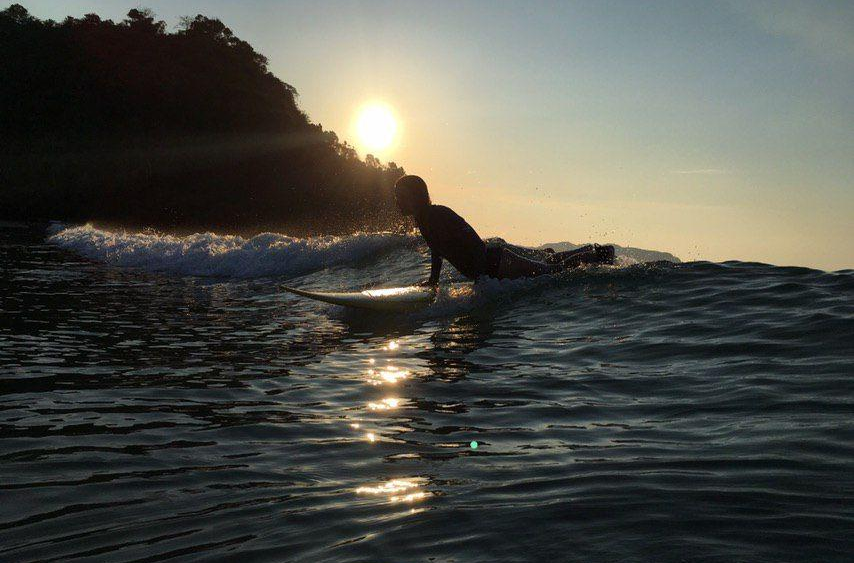A turquoise wave curling into a slumo, reggae sounds, relaxed tan surfers, beautifully folding their hair when they come out of the water... It's all surfing, of course. And yet there are a few nuances that are usually forgotten to tell, although beginners can not avoid them: from constant rowing to «falling cabinets».
Soft boards.
Surfing is really about freedom in the first place. All you need to have fun is a board with fins tied to your leg with a safety net. Depending on the location to the list of equipment you can add more lycra and wetsuit, but that's it.
Surfboards can be very different - and the price (from 20 thousand rubles to infinity), and the material and purpose. Depending on the goals and preferences, in the future you will be able to choose a small, bold and maneuverable shortboard (up to 5-7 feet) or stable longitude (8 feet or more) - for spectacular passes on the board, relaxed gurney with his dog, canary and a bottle of rum and the like spectacular movement.
But it's still better to start with a soft top: a light board with a soft rubber coating and complete lack of maneuverability. It is good first of all because it is very difficult to get serious injury.
Also soft top wins its buoyancy: it is harder to feel when to get up, but it forgives small mistakes and takes out newcomers in the most unpleasant positions. For example, when your hand slips when you get up and you have to lean on your face to not miss this wave.
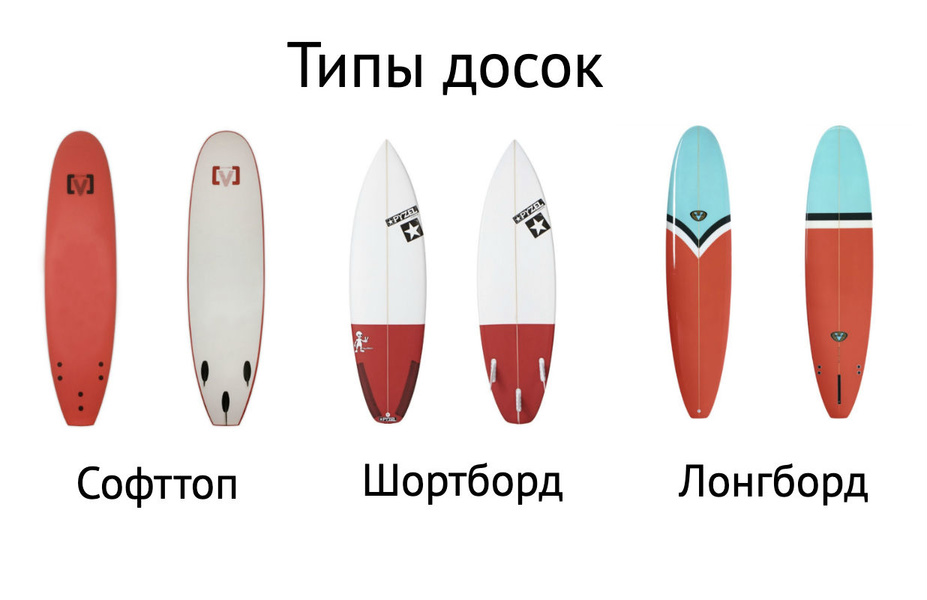
What are you forgetting to say?
Soft-top-- he's like brothers from the '90s. Hits hard, especially when it flies into the liver or kidney area, but leaves no trace.
You should also be prepared for the fact that having moved to a hard board, you will be surprised. It feels as if you moved behind the wheel of a sports car after Zhiguli «model 5».
A hard board, even a large one, is much faster, more sensitive and more malleable. And it also does not forgive mistakes and when you meet it under water, it hits already in an adult way.
At the finish line.
In the case of surfing, the shore is the finish line, not the start. Real surfing starts far beyond the surf line, just above where the wave begins to rise and gather strength. This is the linup. Beginners are best able to identify its location by one main feature: there are flocks of surfers sitting.
If you're just starting out on your own, it's best not to get far from such groups. As a rule, the place is chosen by them not accidentally, and they know something. For example, about a reef a meter underwater. Or that a little to the left there are waves for the armored professionals.
And it's certainly not worth climbing into the water on your own for a lone surfer on a wild beach. He may have come to catch «the big one». You sure you're ready for this?
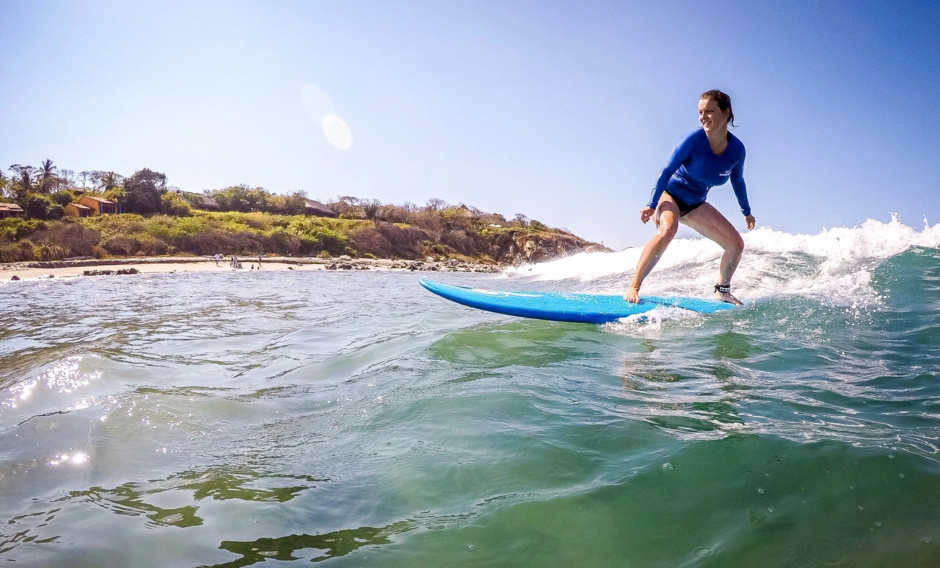
What do they forget to say?
The most vulnerable place in surfing is the moment of surfing waves with the board. Because the waves are already there, and the depth is not yet there. And at the slightest disarray of the surfer gentle white lambs will smash it on the bottom and finish it with a board. And then they'll return it and finish it again.
That is why a beautiful exit from the water - a rare phenomenon: more often than not roll up or quickly run out of the water, not paying attention to the aesthetics of the process, or crawl out of the wave with a swimsuit on his head and jellyfish in his mouth.

Standby mode.
Residents of large cities, this point is first terribly angry, and then becomes one of the main reasons for the love of surfing. A noticeable part of the gurney takes contemplation of the world around and waiting: the right wave, the right current and wind, its turn.
Yes, much depends on the wind, even in surfing. Waves can close too early, be too short or too sharp.
What are they forgetting to say?
Everybody gets tired of waiting. So if you're riding a pretty popular song, you're gonna have to fight for your spot on the wave.
Surfing rules are like a snow park: whoever's on the ski jump is right. And even if you fell and remember how to breathe, lying underneath it, you're wrong. Here are right those who first went out on the wave, in fact they get behind your back. So it's better to have a sixth sense and always remember that under the board is safer.
But waiting and skipping is annoying to everyone. Therefore often there are situations when not very experienced, but already very brave surfers arrange an accident, not being able to divide the ocean.
The plus is that from them you can hide under your board. The downside is that they have a board, too. And the boards with sharp enough fins.
Rowing
Beautiful photos with the board at sunset, attempts to catch your wave and even the first passes in the format of a «human» shell - all this later. Rowing is waiting for you first. And it is in your interest that it is «sports»: if rowing is not active enough, the forces will end before the linap starts.
But that's not the worst part. All those waves that you could ride in a picturesque position are moving towards you. If they wash you off the board, you lose: the «height» is lost and half of the way you traveled will have to progress again. So there are two options for safe passage of such waves: push-ups and «jump-turn».
The first is used when a wave of sane size and it can be overcome at the top, making the nose of the board easier. So the first 40 push-ups are easy. But sooner or later, there comes a moment when the brain offers to do push-ups and they in return offer to take him for a walk away.
The variant with a coup is used when from the sight of an impending wave the best years run before the eyes, waving a goodbye hand. That is, when the wave is exactly too big to pass under the board, in addition, it has already begun to close (white lambs can be seen).
In this case, the surfer turns over along with the board. Thus, a person is under water and under the board, the surfer lies on the water fins up, and the wave passes quietly over all this construction. Usually everything passes almost without unpleasant sensations (water in the nose does not count).
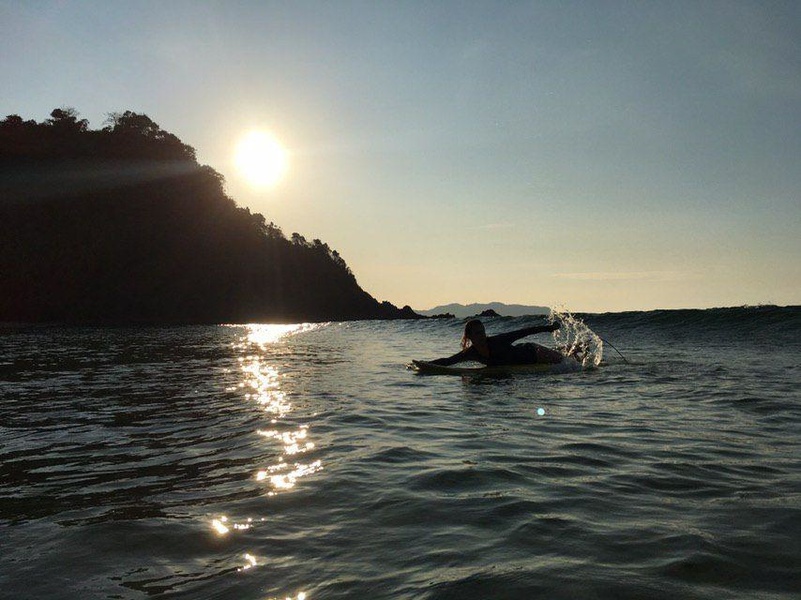
What do they forget to say?
Sometimes there are interesting side effects: when the wave is large, it can turn the board with a surfer glued to the bottom and run with acceleration towards the shore. If you take it philosophically, it is quite possible to stand on your feet and feel like this when the wave is lucky.
It's great if you swim brass, crawl and all the other styles since childhood. Happy adherents of the technique of frog «»or «grandmother-style» have to learn to row, not pottery, wide scallops and straining all the muscles of the bark.
You can soothe yourself with the fact that on an «adult» board the wave can swim through, especially if you choose a shortboard. It is less floating than a soft top and can be easily floated if needed.
Fortunately, it's hard only the first three days. Then the body realizes that it will not be better, and adapts.
The bonus is an embossed back and springing buttock muscles.
The elevator to the linap
Actually, there are speed lanes between the waves where you can get to the linup almost without loss. These are mini rivers flowing into the ocean and formed by the outflow of water from the shore.
But before the ability to see these cherished trails, you have to experience a lot of interesting sensations, overcoming the counter-waves (remember the point about push-ups and coups).
What are they forgetting to say?
First of all, laundry in a mad meat grinder. If the impending wave is closer than we would like, and none of the right ways did not work, the surfer will experience a deep hydro massage of the whole body. The bonus can be a triple underwater flip and salt water rinsing through the ears, nose and everything else. In fact, it just sounds so scary: if you choose the right place, the bottom is far enough away and not fed with reefs and stones - everything will go smoothly. The main thing here is to relax and wait.
From pluses - the board is tied to you, and sooner or later you will pop up. Of the minuses - the board is tied to you, and no matter how it refers to the streams of water, sooner or later it will come back. With acceleration and surprise. So watch your head.
Second, a «falling closet». This is the next level of pleasure. Rinsing from the soul, dug out, spit out the jellyfish again, trying to see the sun from under your own fashionably burned curls.
And then the closet falls on you: a quality, massive, not some IKEA.
All because the waves come in sets, and most often - on the growing. So first we should return to the board, turn it nose to the ocean (at least - the tail, most importantly, not sideways) and assess the remoteness of the approaching «closet. Only after that you can breathe, look for washed trunks, correct your hair and take the sea urchin out of your leg. In general, you should not turn your back on the ocean.
Sun, heels and parting.
Surfing is freedom. That's why I really do not want to pull on a wetsuit and any other means of protection. Especially when the action takes place in the Indian Ocean, for example.
However, we should not forget about the second danger after the ocean: the sun. So Lycra is a necessity for all the pale residents of megacities. Sanskrin also has to be very good and with a spf 50 degree of protection.
However, the nose will not save this: firstly, it is closest to the sun, and secondly, you constantly touch it by rubbing your eyes. In this case, the surf zinc is invented. It works simply and effectively: it does not wash away and does not let the sun rays pass. Usually zinc is white, but to make it more fun, the manufacturers began to paint it in bright colors. So don't be surprised at people with colorful noses on water.
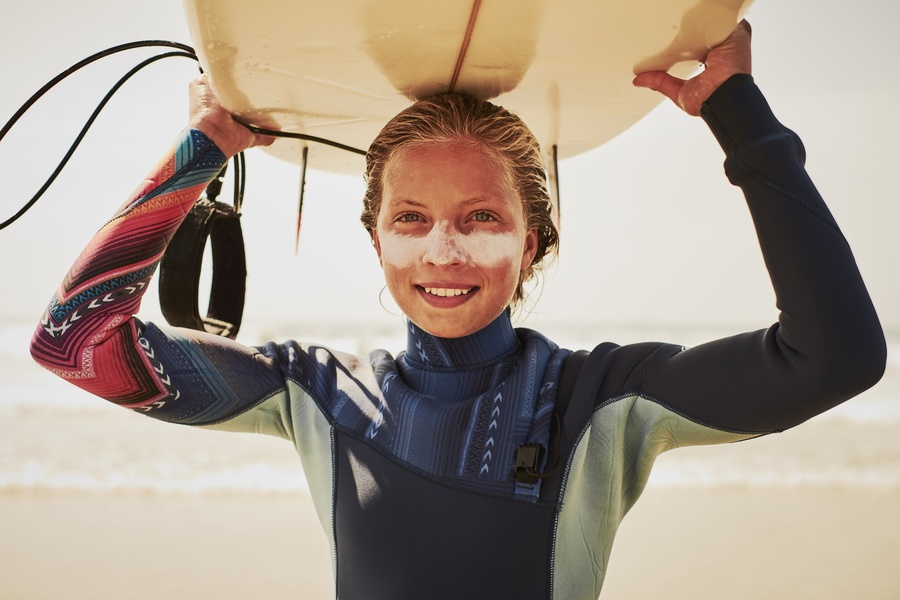
What do they forget to say?
Apart from the nose, traditionally unexpected body parts such as the parting under your hair, ears and heels burn. And also the place on your back that you can't reach with Sanskrin.
It's all gonna hurt first, then it's not aesthetically pleasing to cling to (especially the parting). And do not worry that your vacation will be wasted: the sun will brown you through any sanskrin and lycra.
By the way, riding on a soft top, it is easy to get calluses in unexpected places: underarms, abdomen, on the rise of the foot. But this problem will go away on its own as soon as you move to an ordinary solid board. The blisters will smoothly change into bruises.
Hang out or roll?
If you don't live by the ocean, it's better to learn with an instructor. Many moments are impossible to understand by youtube tutorials, they are realized on pure feelings: when to get up, what wave will take out and what wave will slip, how long to get rid of. Strange as it may seem, a beautiful stand and the way to get up (by jumping or kicking) are very individual and secondary things.
You can study at school or individually. Both options have their advantages.
School is a lot of theory and practice on the beach and in the pool, but at the same time the opportunity to look at the mistakes of others. It is suitable for those who are able to perceive information by hearing and then apply what they hear. An unpleasant moment is the traffic on a linape: surf schools are usually in already popular places, plus the turn of classmates. But you are guaranteed to have a company of like-minded people.
All schools learn first on foam, the white«water that remains»after the wave collapses. It is a kind of the scooter, allowing to work out process of rise and a rack.
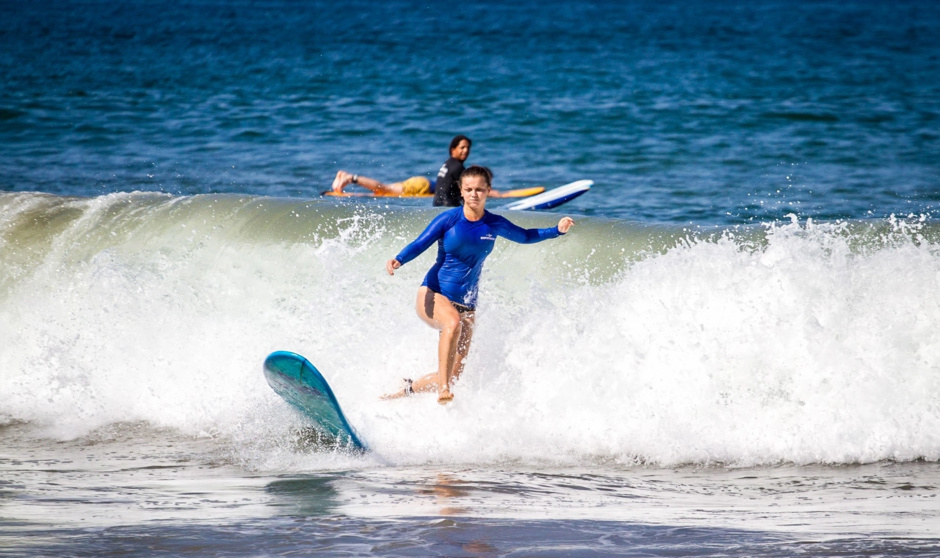
Individual lessons are more effective for those who are useless to listen to the joints of others, it is more important to feel everything at once on themselves. At the initial stage, the instructor will help you to properly clear the wave, prompt the right wave and when to start acting.
Individual lessons can take place immediately on the green waves, bypassing the foam phase. This is important for those who have good coordination, and the process of getting up is not a problem - more important to understand when to jump and what to do later.
But with the local smiling guys from the beach is not worth doing, if you want to progress.
They will, of course, push at the right moment and will not leave to die in the waves, but it will be a simple carousel with zero exhaust in terms of training.
How to prepare?
The best part is that you don't have to be jocked for surfing or spend a year preparing in the hall. The body gets in the right shape during training. But at home you can't think about the board, so there will be no extra swimming lessons and training on the balance board (this board is on a plastic roller, costs from three thousand rubles and almost does not take up space at home).
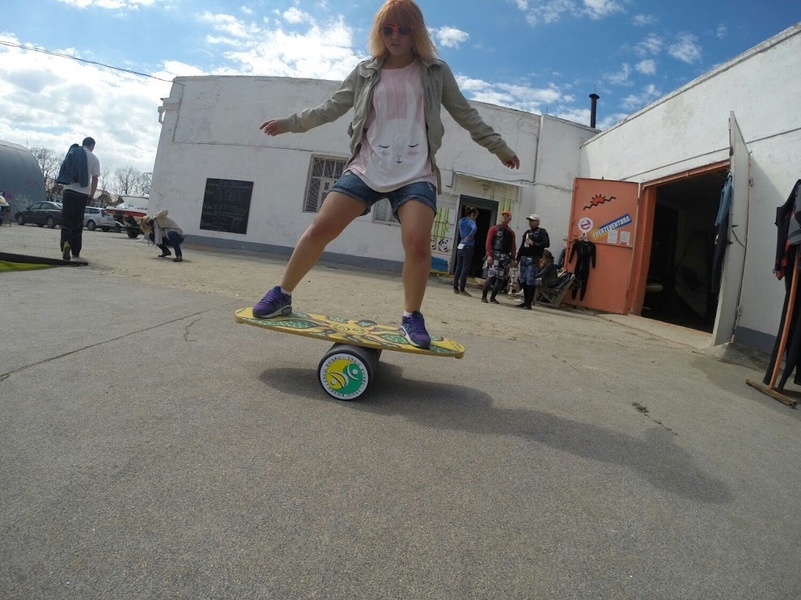
If surfing has penetrated you, there is an exit even in the conditions of a metropolis. This is an artificial wave, wake-surf and the most urban entertainment: surfscate or carver. The latter is a variation of a longboard with a very soft suspension, allowing you to accurately imitate the pumping and turns on the wave.
Where to go?
The choice of the right spot depends largely on your preferences. Someone agrees to put up with cold water for smooth waves and European mentality. Then a straight road, like Portugal. For some, it's more important to have warmth, colour and flavour for like-minded people. That's Bali in the first place (if you look at our hemisphere). If you stay away from party Kuta and do not climb directly to Uluwatu (a third of the video about the giant waves - from there), you can find schools and waves for all tastes, besides inexpensive.
And in general, ride everywhere where there is an ocean: Mexico, Sri Lanka, Morocco, Thailand, UAE, the U.S. coast, etc. There are people with the board and the seas, though less often: for example, there is a spot in the Crimea, and in France in general, a few of the most popular surf spots in Europe.
The toughest surfers can be found even in the White Sea or off the coast of Iceland.
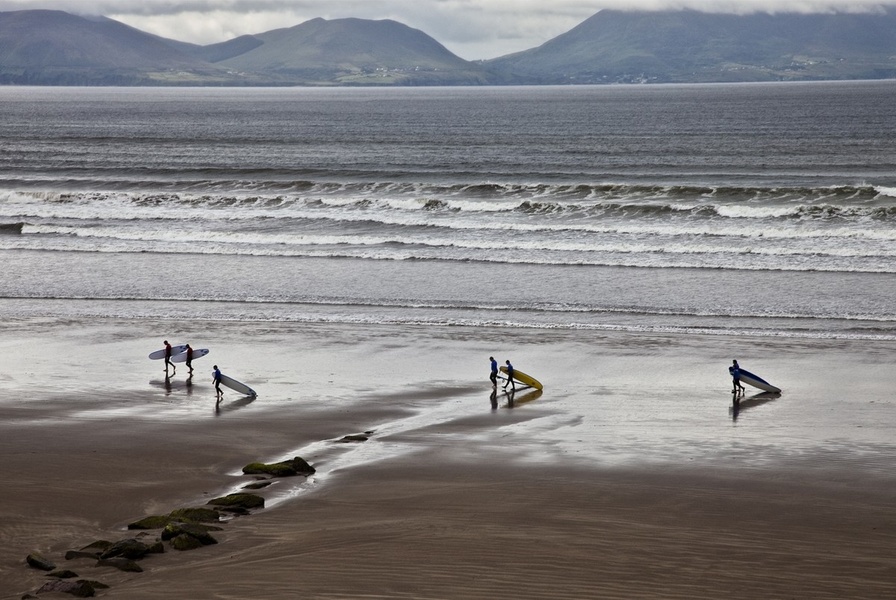
It sounds scary, but surfing is actually the best thing a person can do to the ocean.
You don't know how it works, but the pleasure comes even to those who haven't taken a single wave and sat on a linapel most of the day. It is not a pity to get up at 5 a.m. to catch the morning sunflower and wax the best lycra. ⠀
See you on the water!

